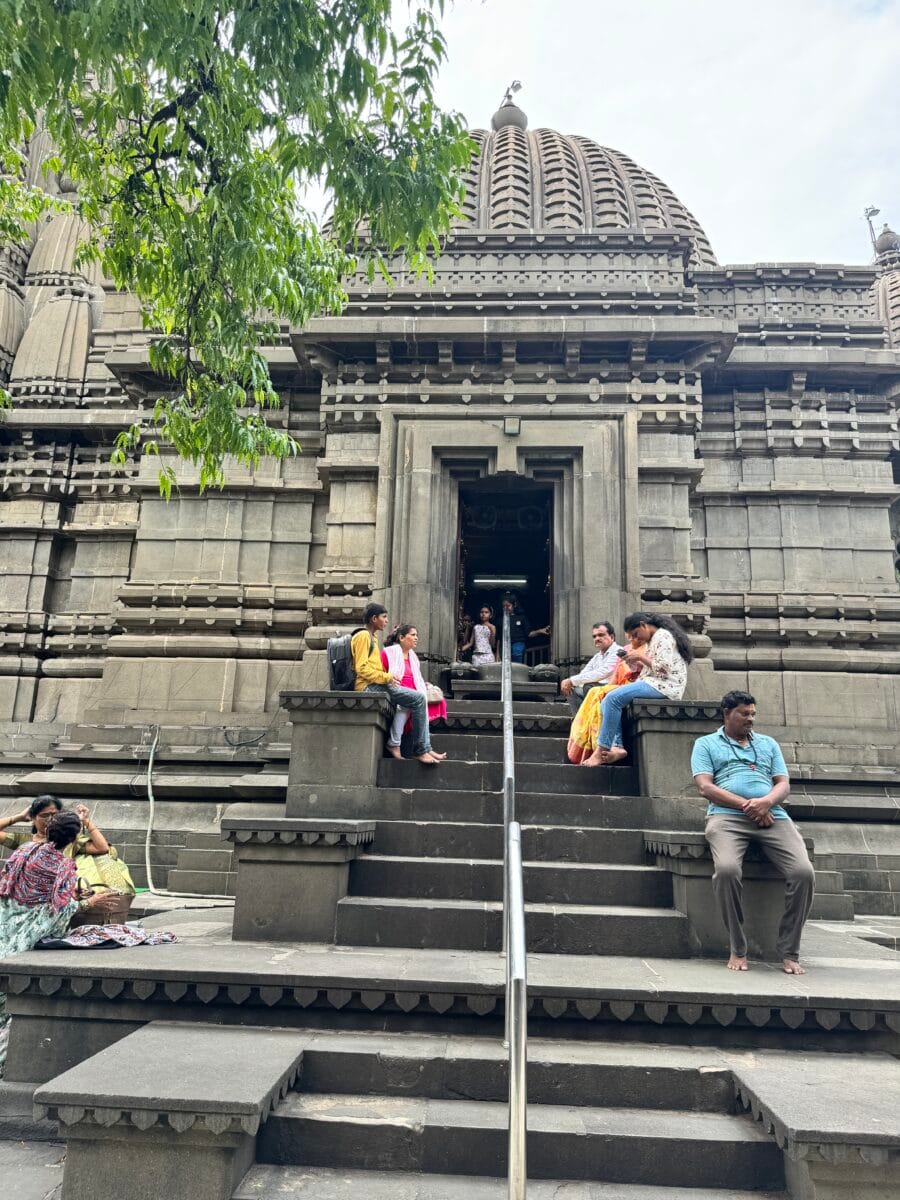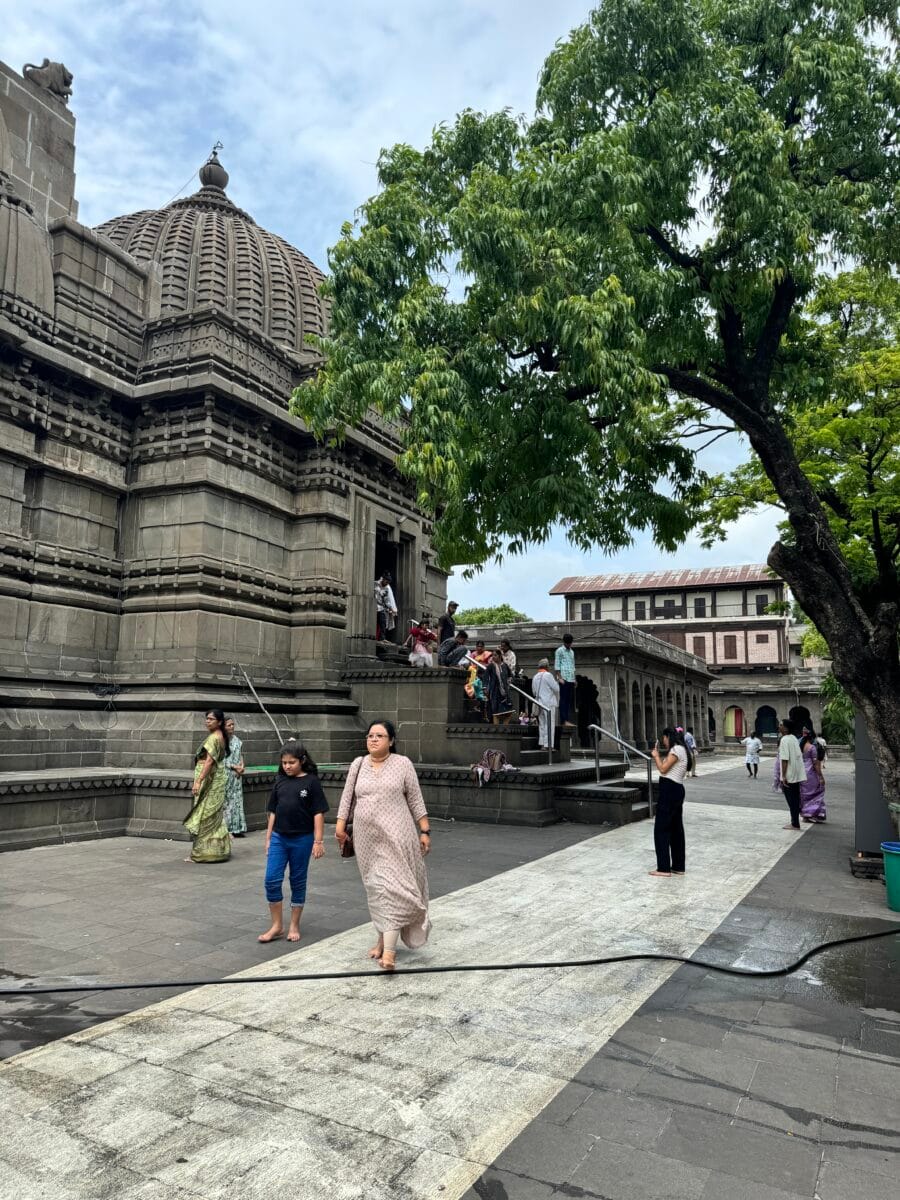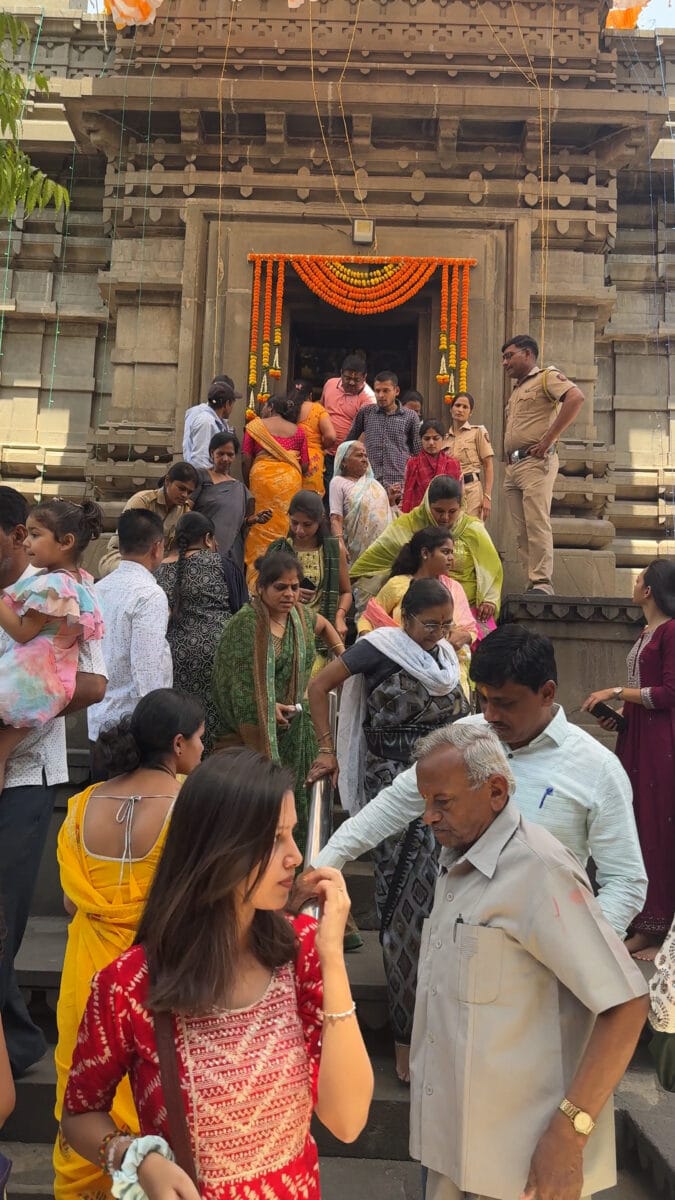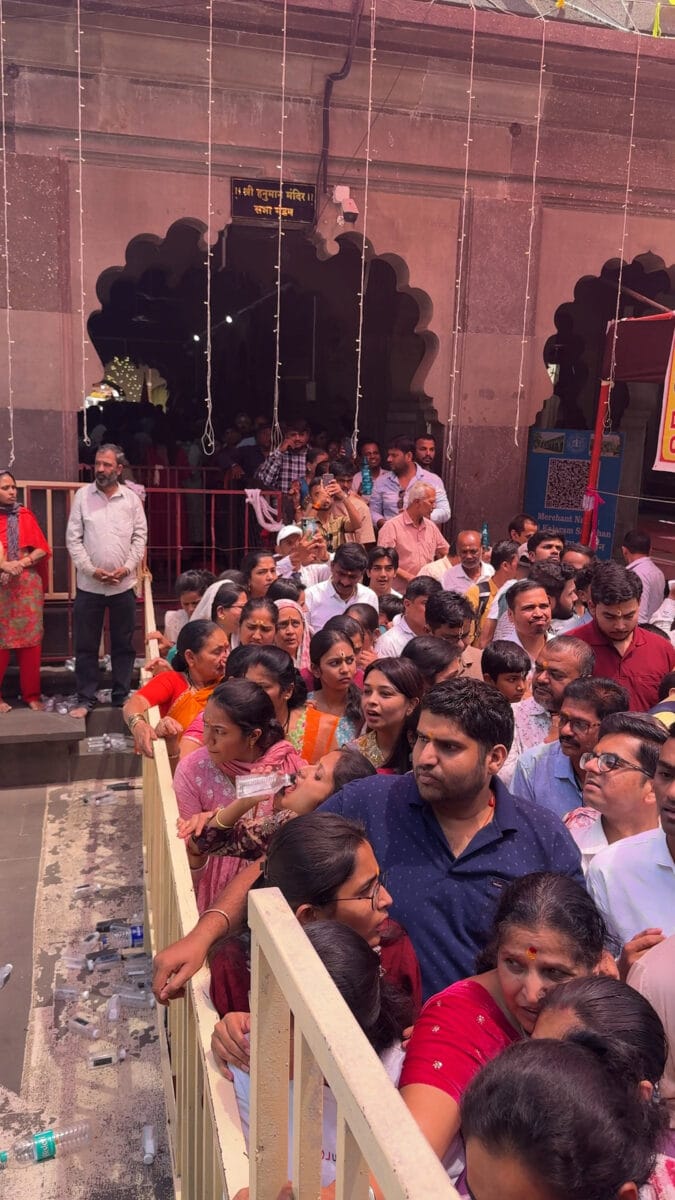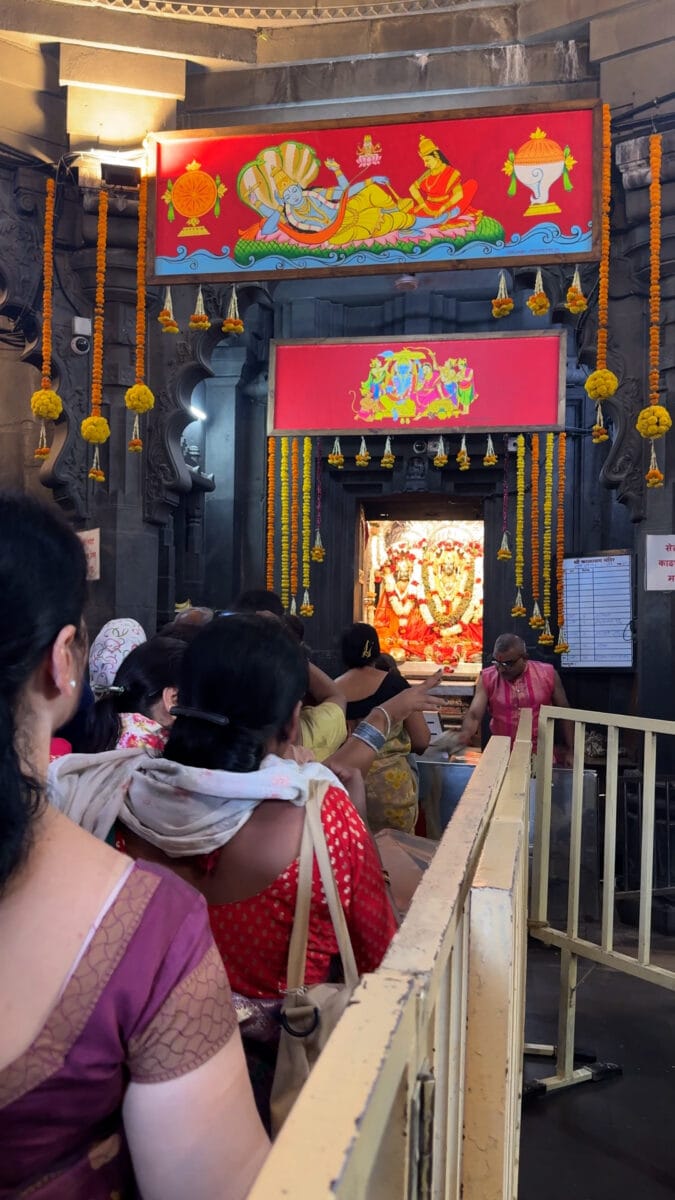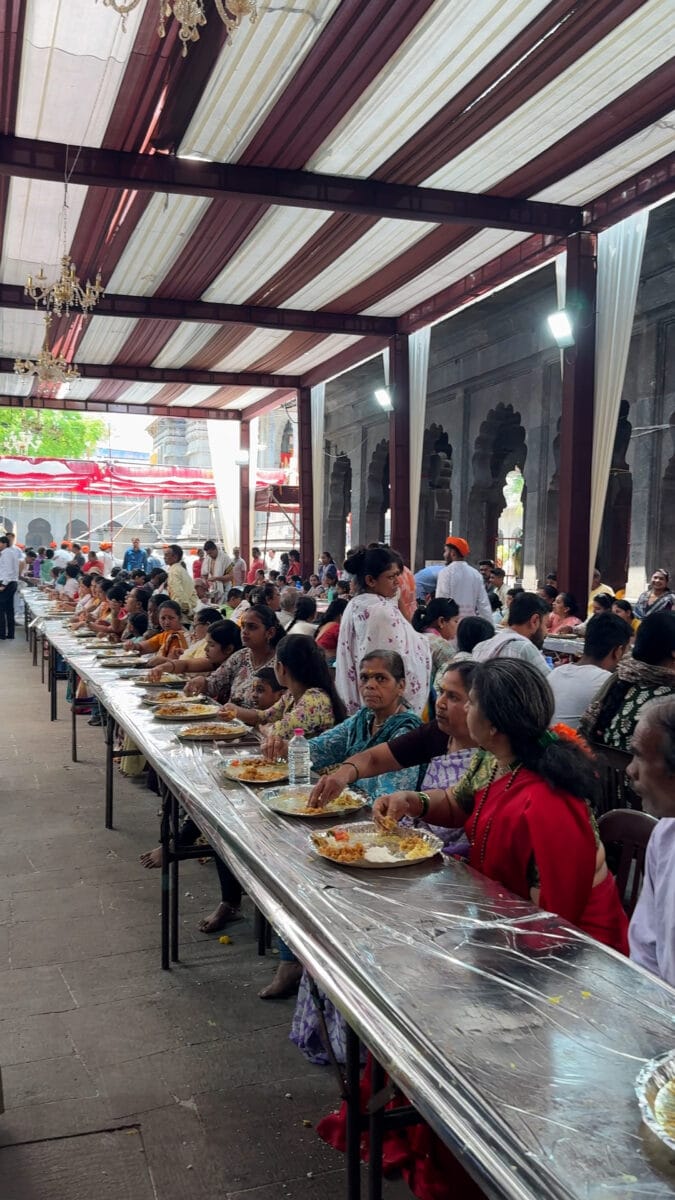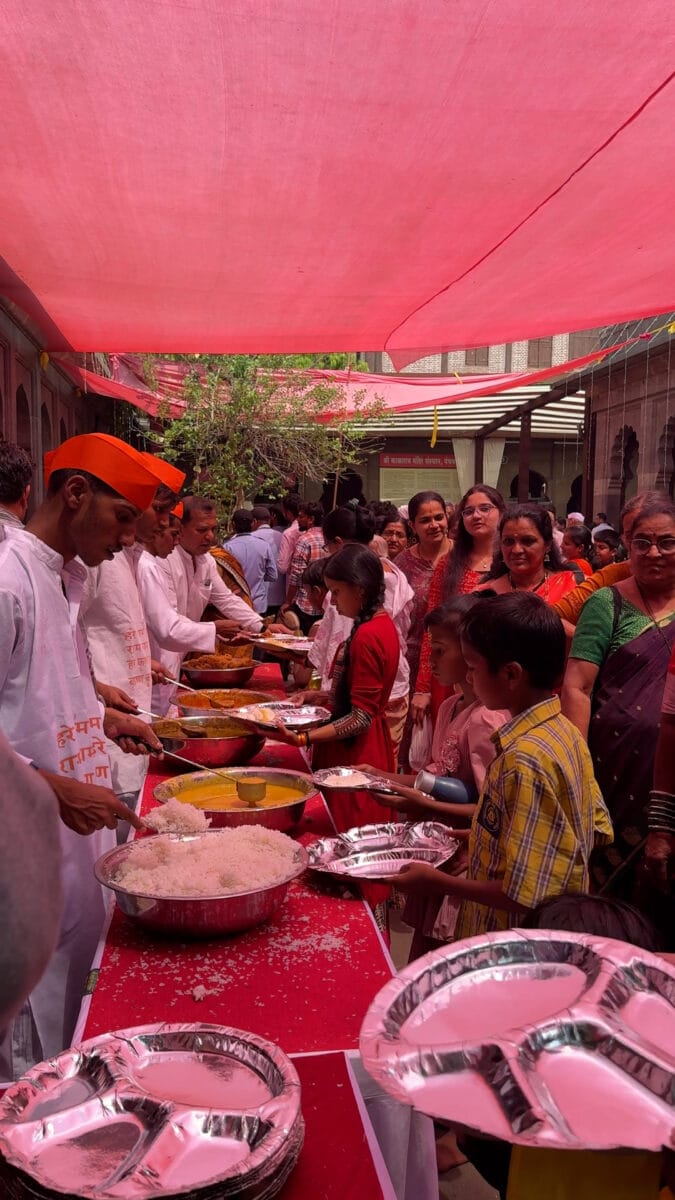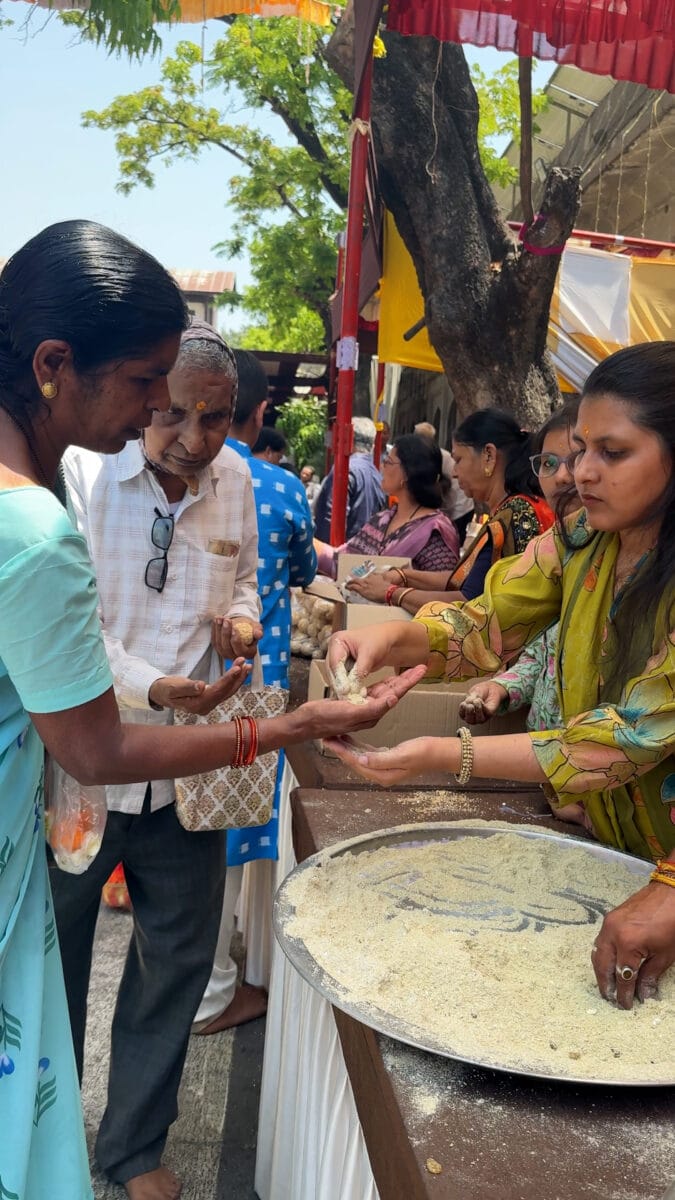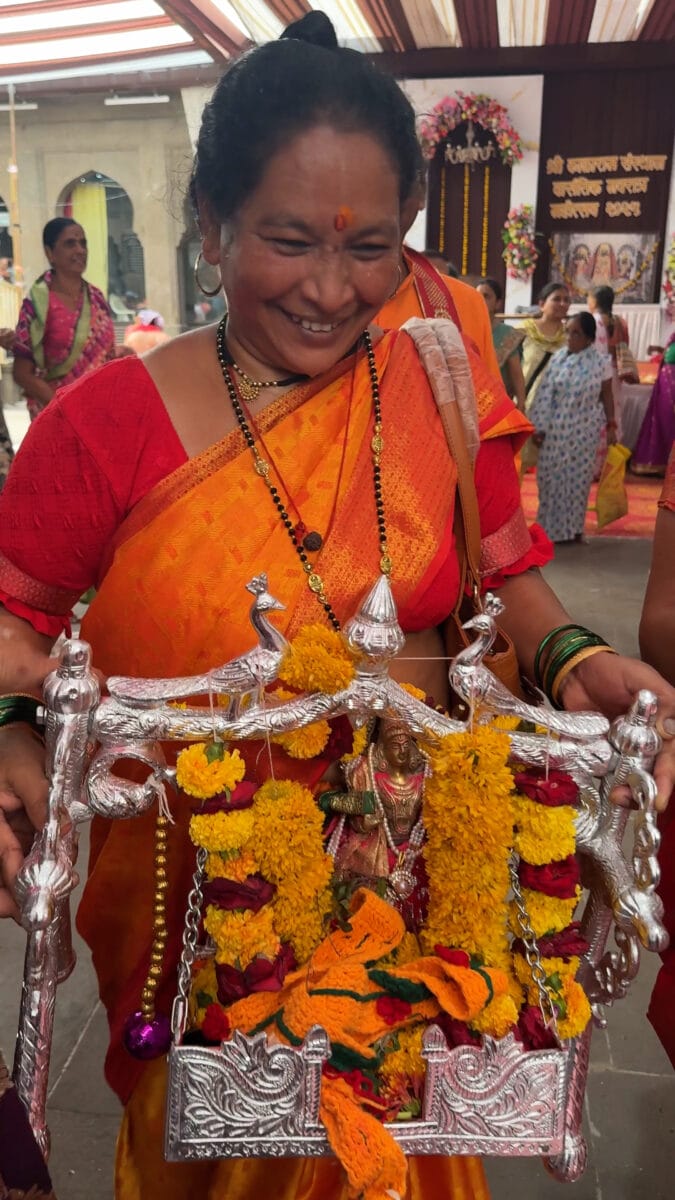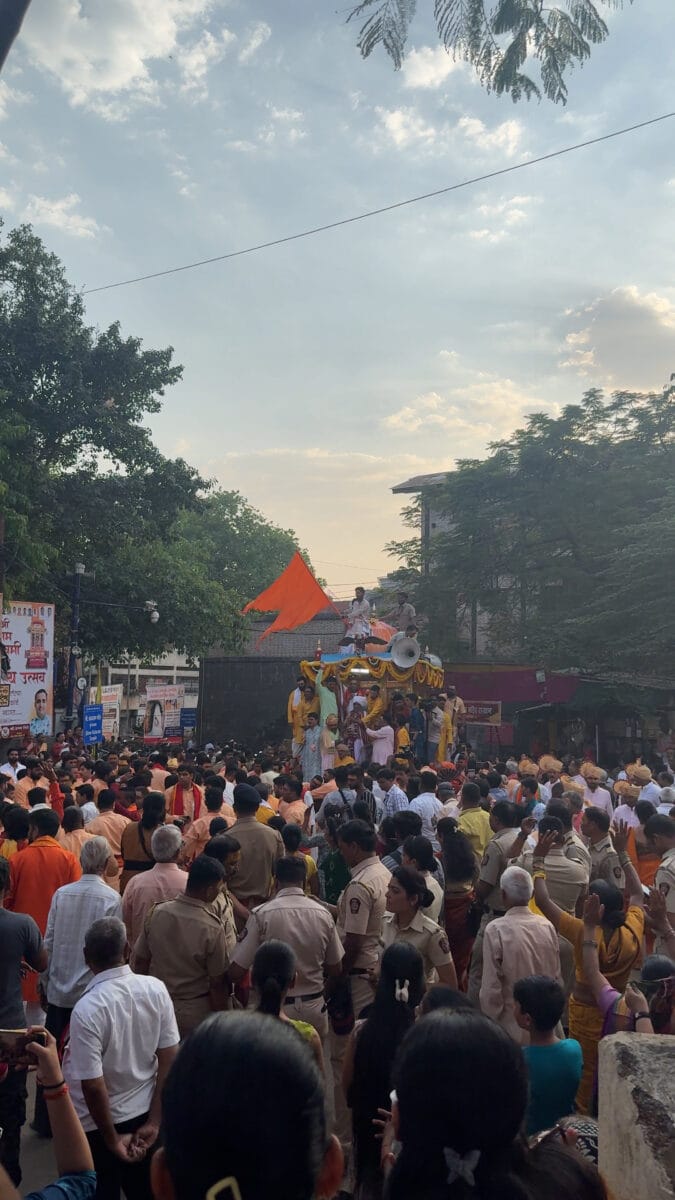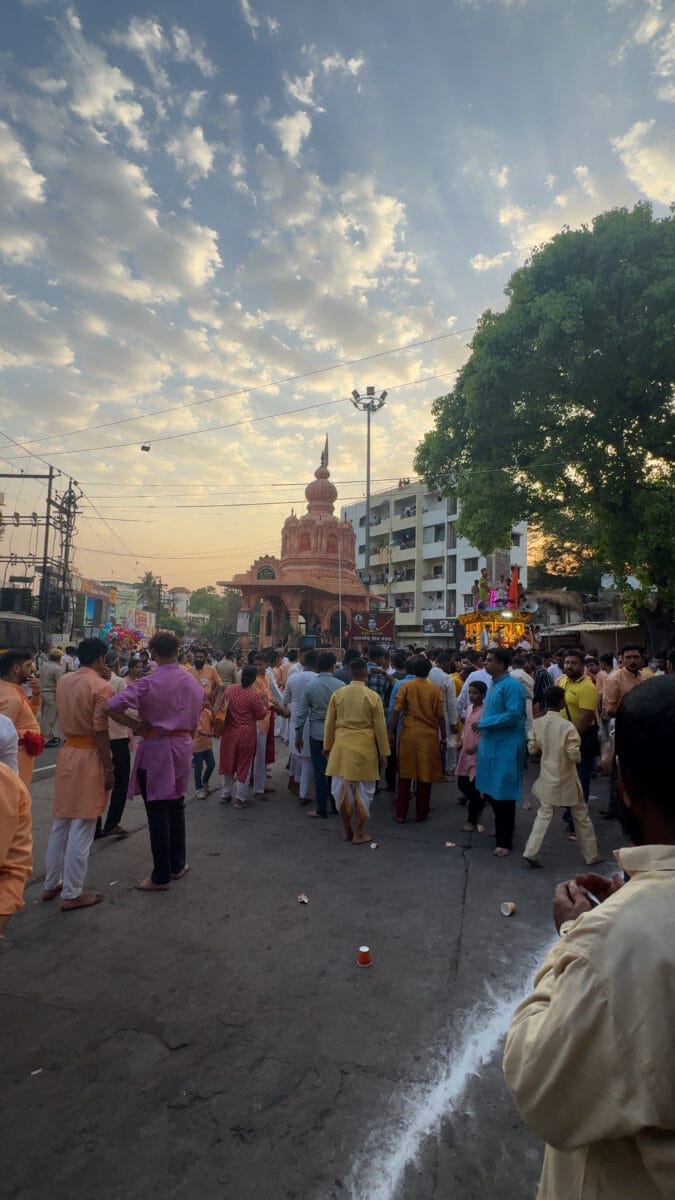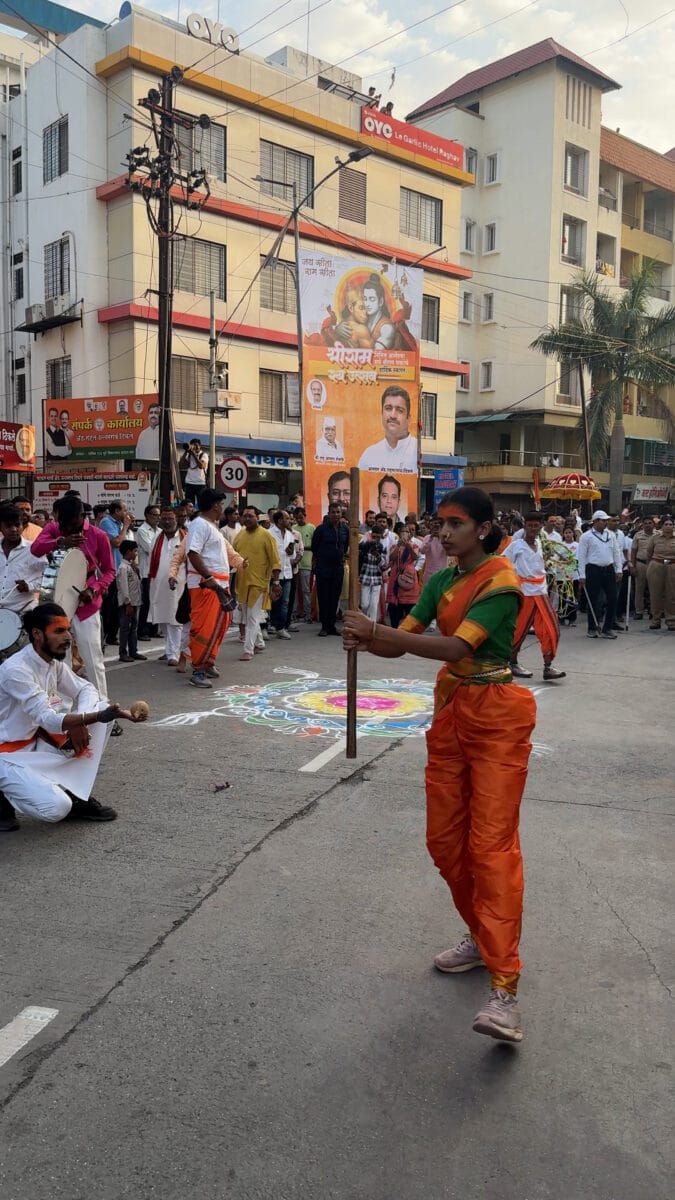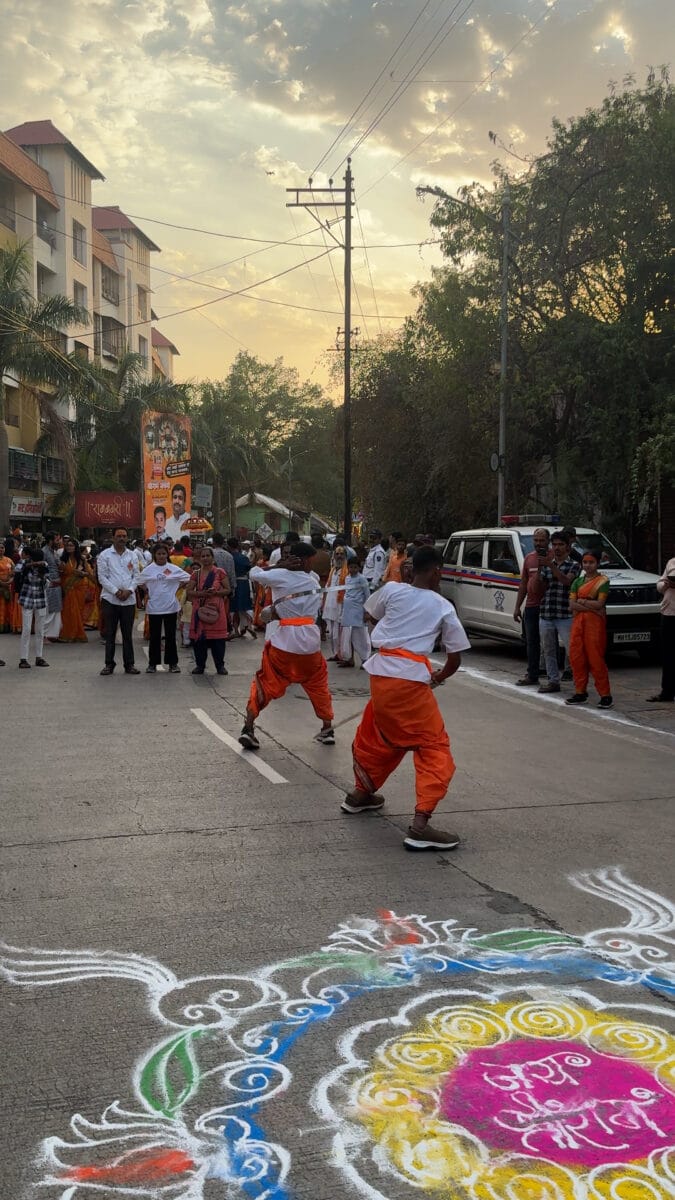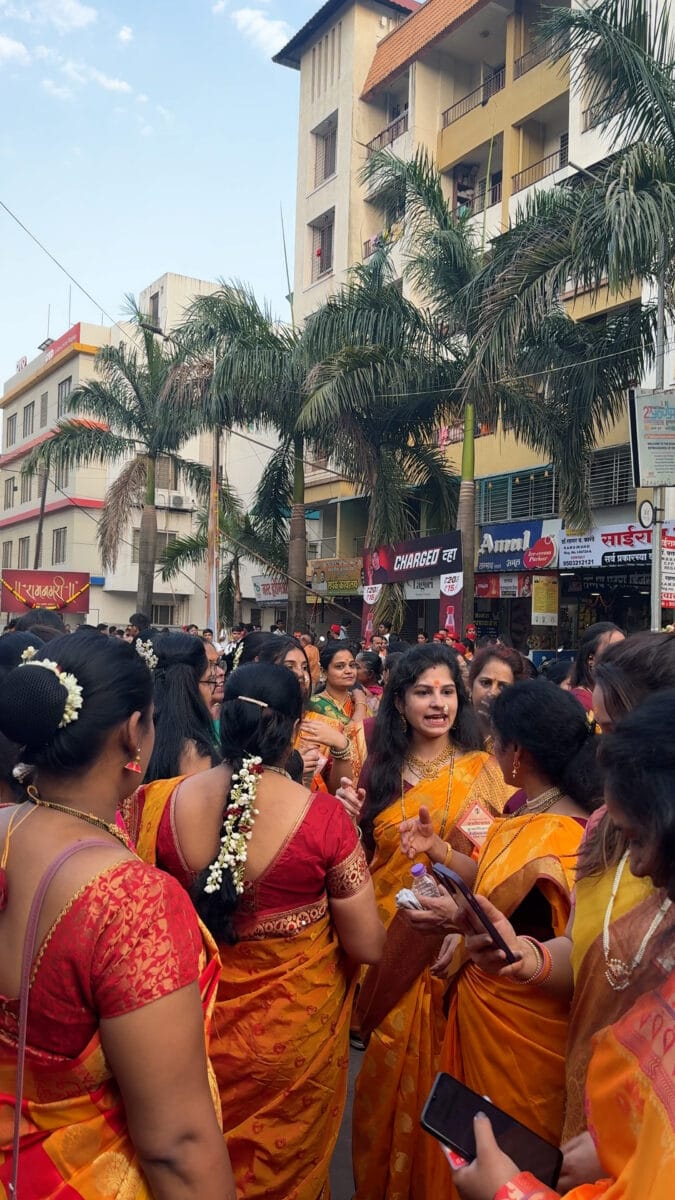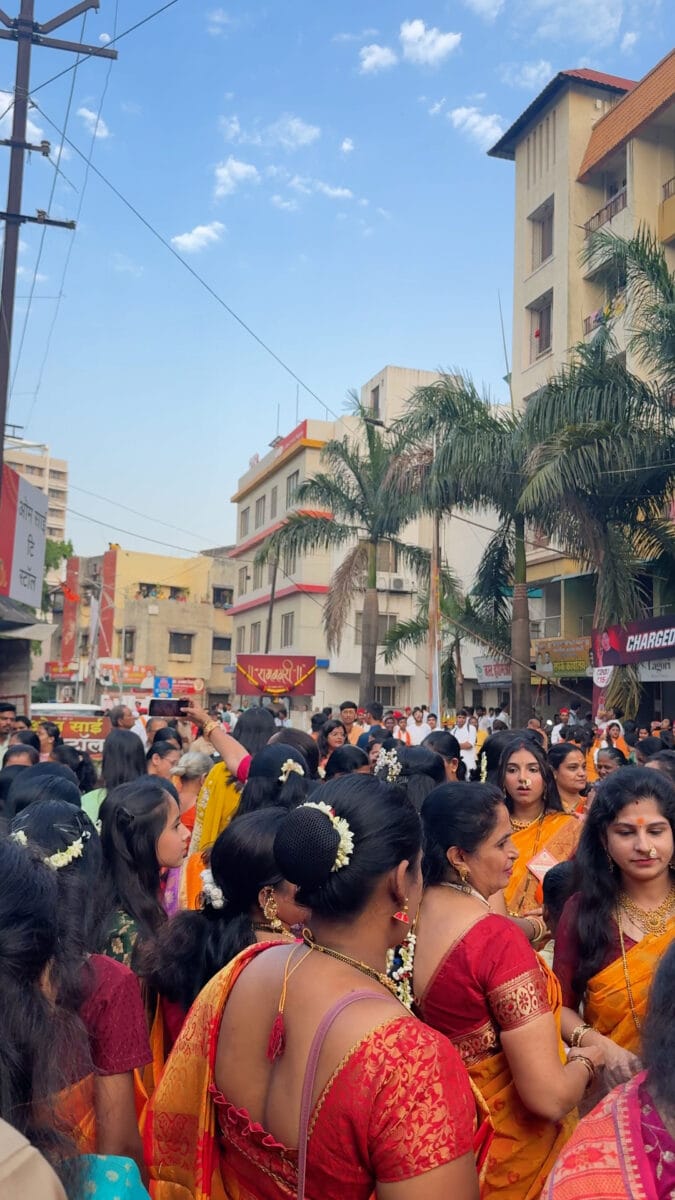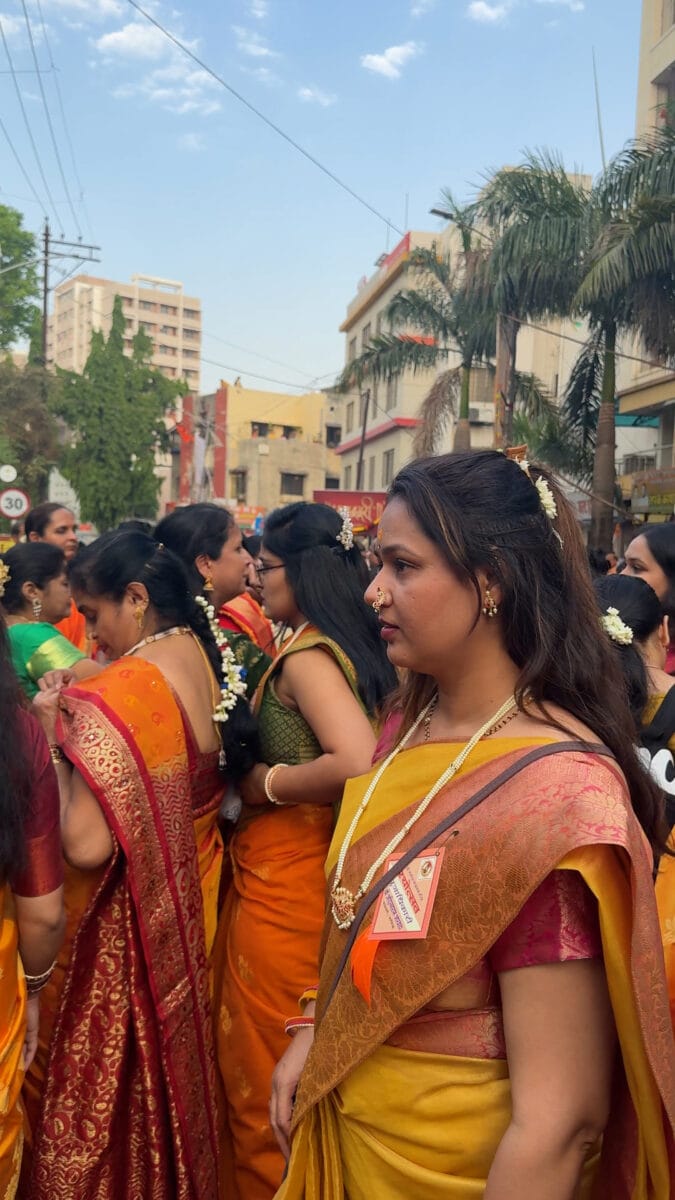Kalaram Mandir Nashik, also known as Kalaram Temple, is one of the most sacred and culturally significant Shriram temples in Maharashtra.
Located in the ancient region of Panchavati in current Nashik City, this popular temple is dedicated to Prabhu Shriram, whose unique black stone idol gives the temple its name.
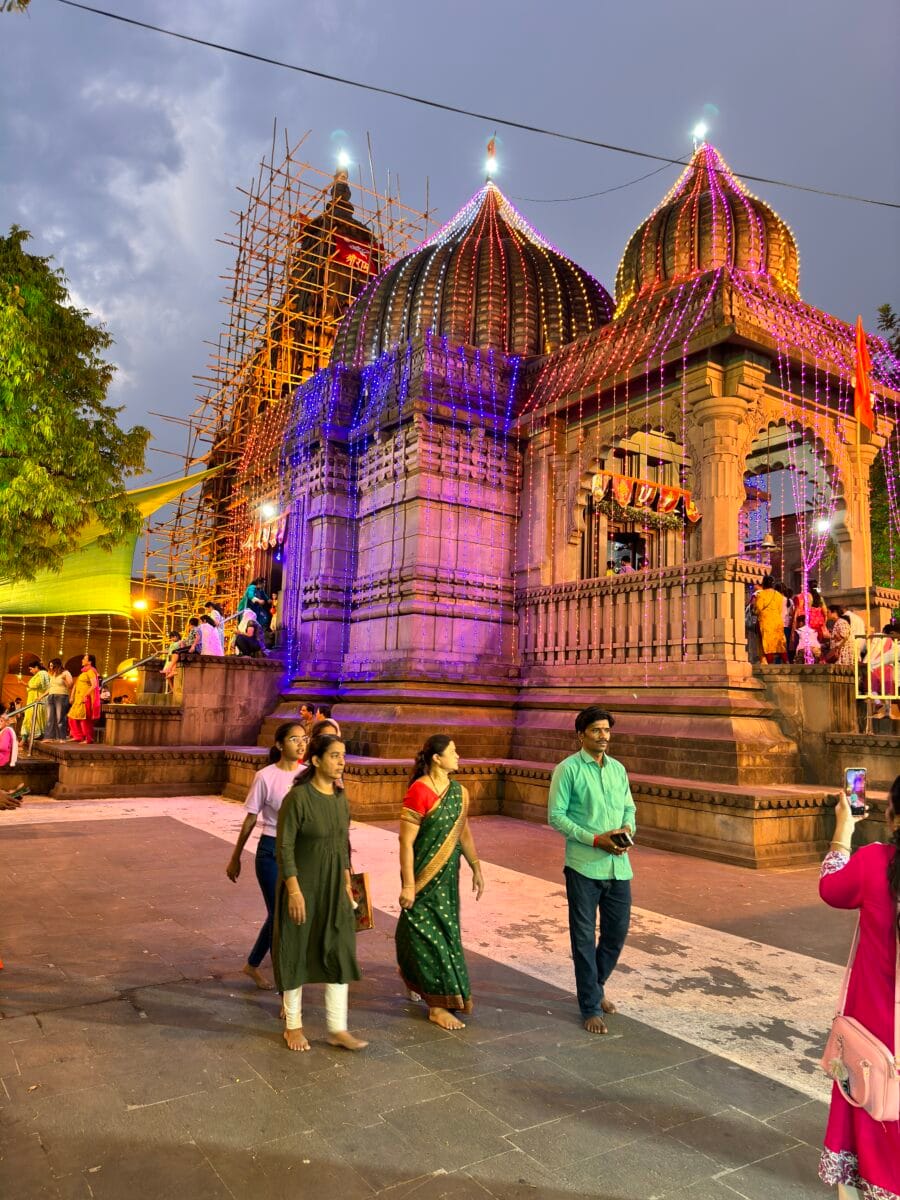
From its majestic Nagara-style architecture to its spiritual aura and grand celebrations like Ram Navami and Dashehra, Kalaram Mandir continues to attract thousands of devotees and pilgrims every year.
Whether you’re looking for Kalaram Mandir timings, the fascinating story behind the black idol, or simply want to browse Kalaram Mandir photos, this guide offers a complete spiritual and cultural overview of one of Nashik’s holiest landmarks.
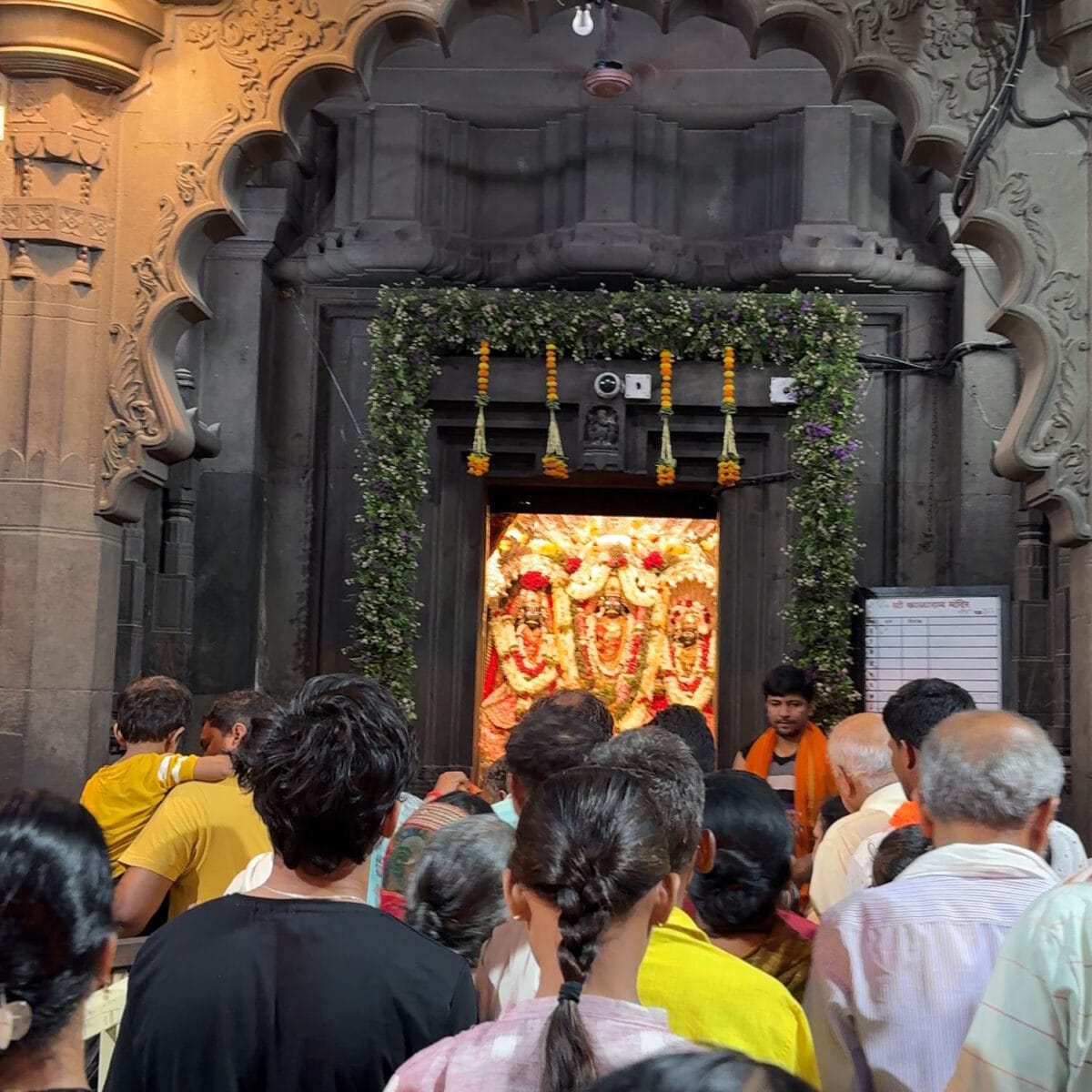
Kalaram Mandir Nashik – Address, Location & Timings
- Address: Shri Kalaram Mandir, Panchavati, Nashik, Maharashtra 422003
- Timings: 6:00 AM – 10:00 PM (daily)
- Photos: Allowed in the courtyard, not inside the main temple.
Kalaram Temple : distance from major landmarks
- Sita Gufa – 1 minute walk
- Ramkund – 2 minute drive
- Panchavati Karanja (traffic junction) – 2 minute drive
- Tapovan – 11 minute drive
- Mumbai Agra Highway – 15 minute drive
- Nashik Road Railway Station – 30 minute drive
- Trimbakeshwar – 1 hour drive
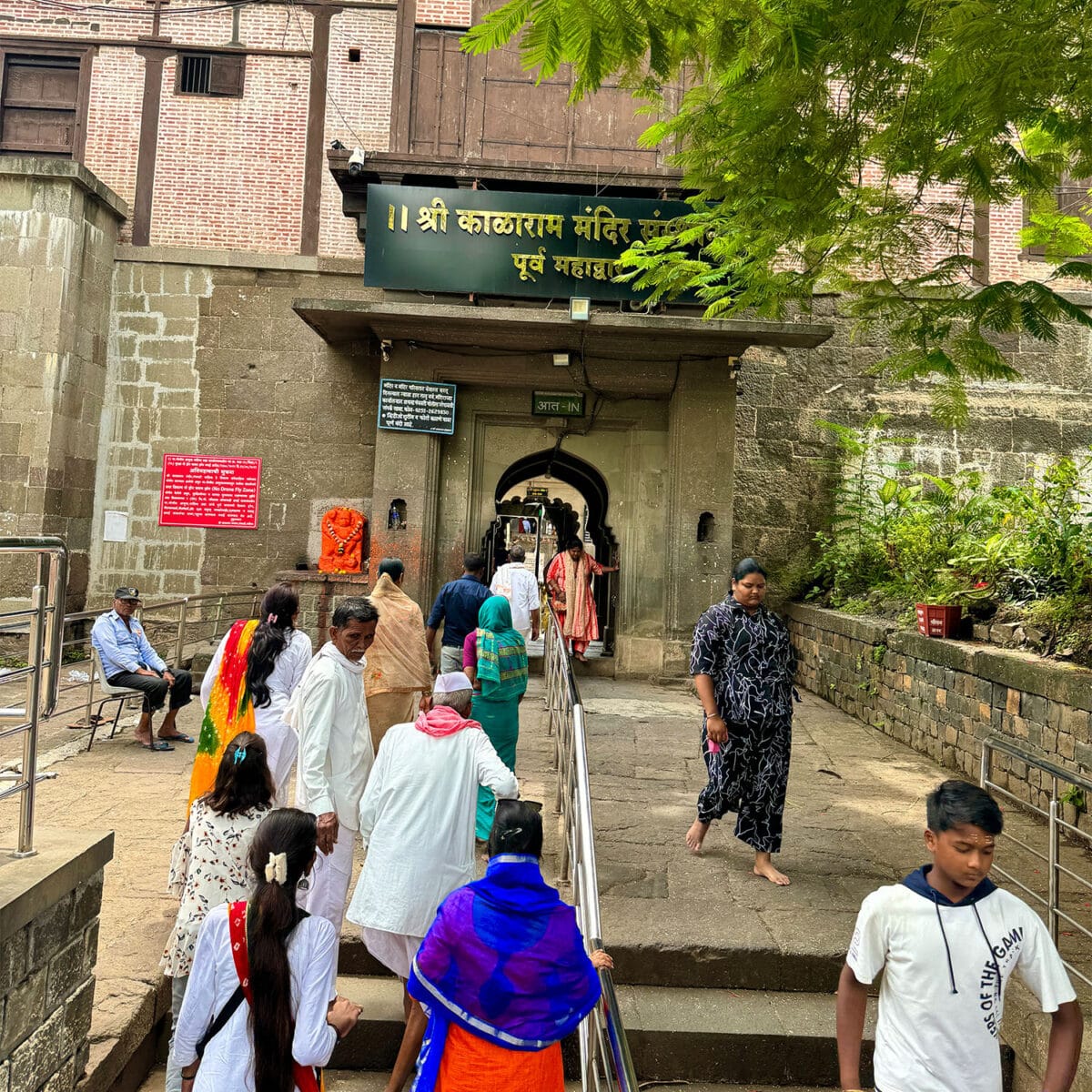
History & Story of Kalaram Mandir
Built in 1788 CE by Sardar Rangrao Odhekar, an official in the Peshwa administration of the Maratha Empire, the Kalaram Mandir story begins with a dream. Odhekar saw an image of a black idol of Shriram submerged in the Godavari River.
The idol was retrieved and a grand temple was constructed to house it. This black stone idol of Shriram, standing in an upright posture alongside Sita and Lakshman, makes this temple distinct across India.
Crafted entirely in black basalt stone, the temple remains an enduring symbol of devotion, resilience, and Sanatan values.
Kalaram Temple Nashik – Spiritual Significance of the Site
The exact site where the temple was built is believed to be the place where Mata Sita and Prabhu Shriram used to perform their daily pooja rituals, yagyas and meditation while living in exile in Panchavati on the banks of the Godavari river.
Kalaram Temple Architecture – A Black Basalt Marvel
- Built in the Nagara-style of temple architecture
- Temple height: 70 feet, visible across Panchvati
- Includes 84 beautifully carved black stone pillars
- Separate shrines for Hanuman, Dattatreya, and Ganesh
- A beautiful arched gateway leads into the complex, symbolizing traditional Hindu shilpa-shastra
The architecture of the Kalaram Temple Nashik reflects both spiritual sanctity and aesthetic grandeur.
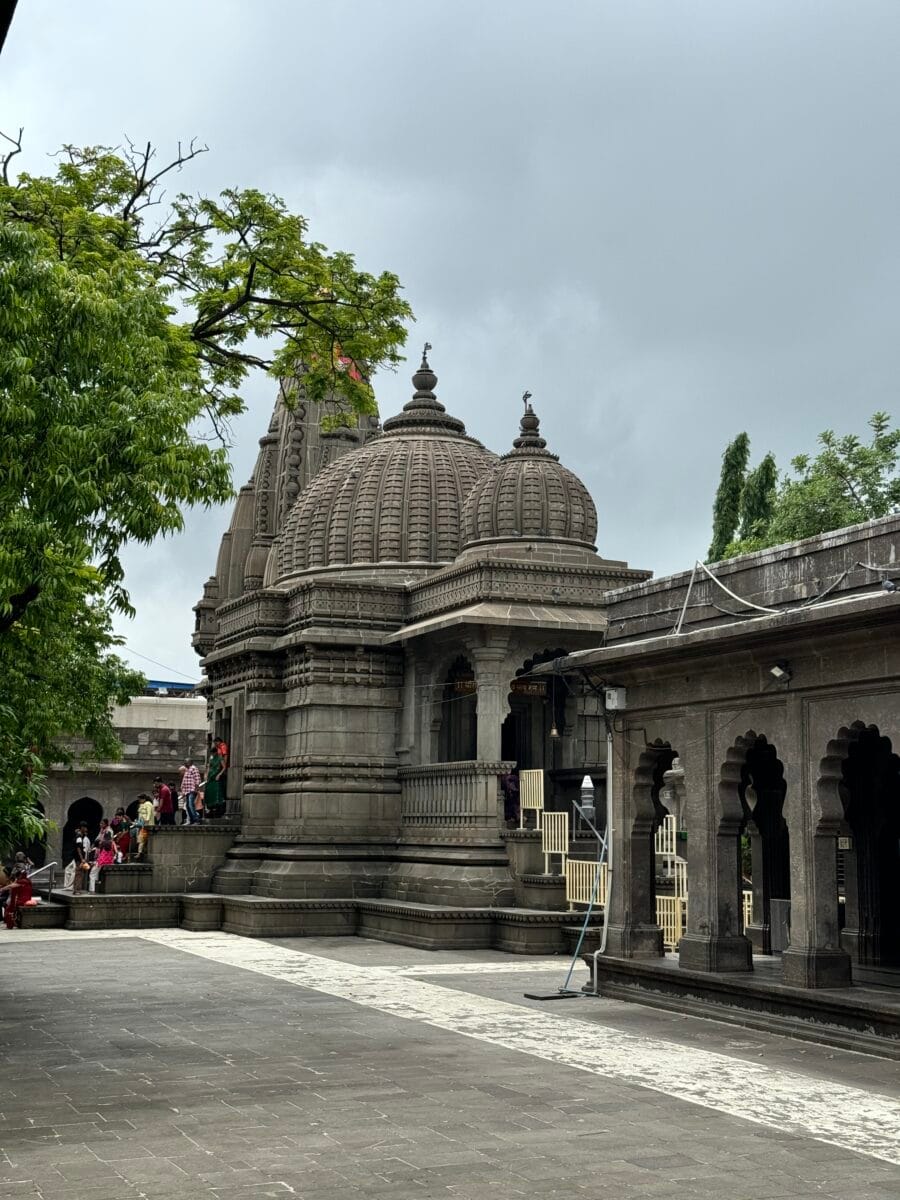
Kalaram Temple and its Cultural Symbolism
The Kalaram Temple is constructed entirely out of finely carved black basalt stone and stands on a perfectly square plinth, reflecting the precision and sanctity of Vedic architecture.
Surrounding the temple on all four sides are 6 to 8-foot-wide sheltered corridors, thoughtfully designed to provide space for pilgrims to rest, meditate, or take shelter – reinforcing the temple’s role not just as a site of worship but as a true dharma sthala.
One of the most spiritually significant elements of the structure is its 84 intricately carved pillars, symbolizing the 84 lakh (8.4 million) yonis or life forms that every soul must pass through before attaining the rare human birth, as per Sanatan Dharma.
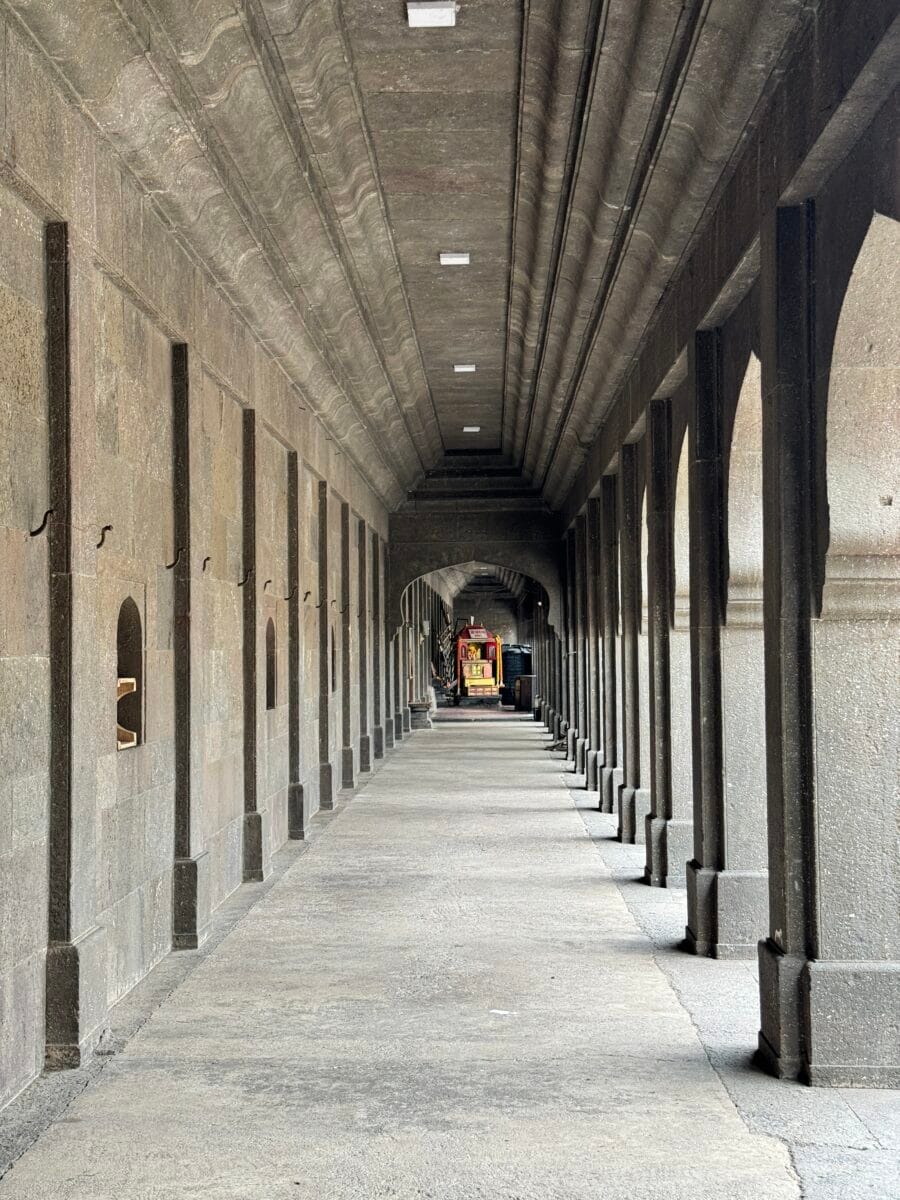
As soon as we enter the temple premise, we come across the beautiful Sabha Mandap or Hanuman Mandir which is the venue for daily bhajans and religious discourses. The Mandap houses a small shrine of Hanumanji whose gaze is fixed at the feet of Shriram’s idol in the main temple.
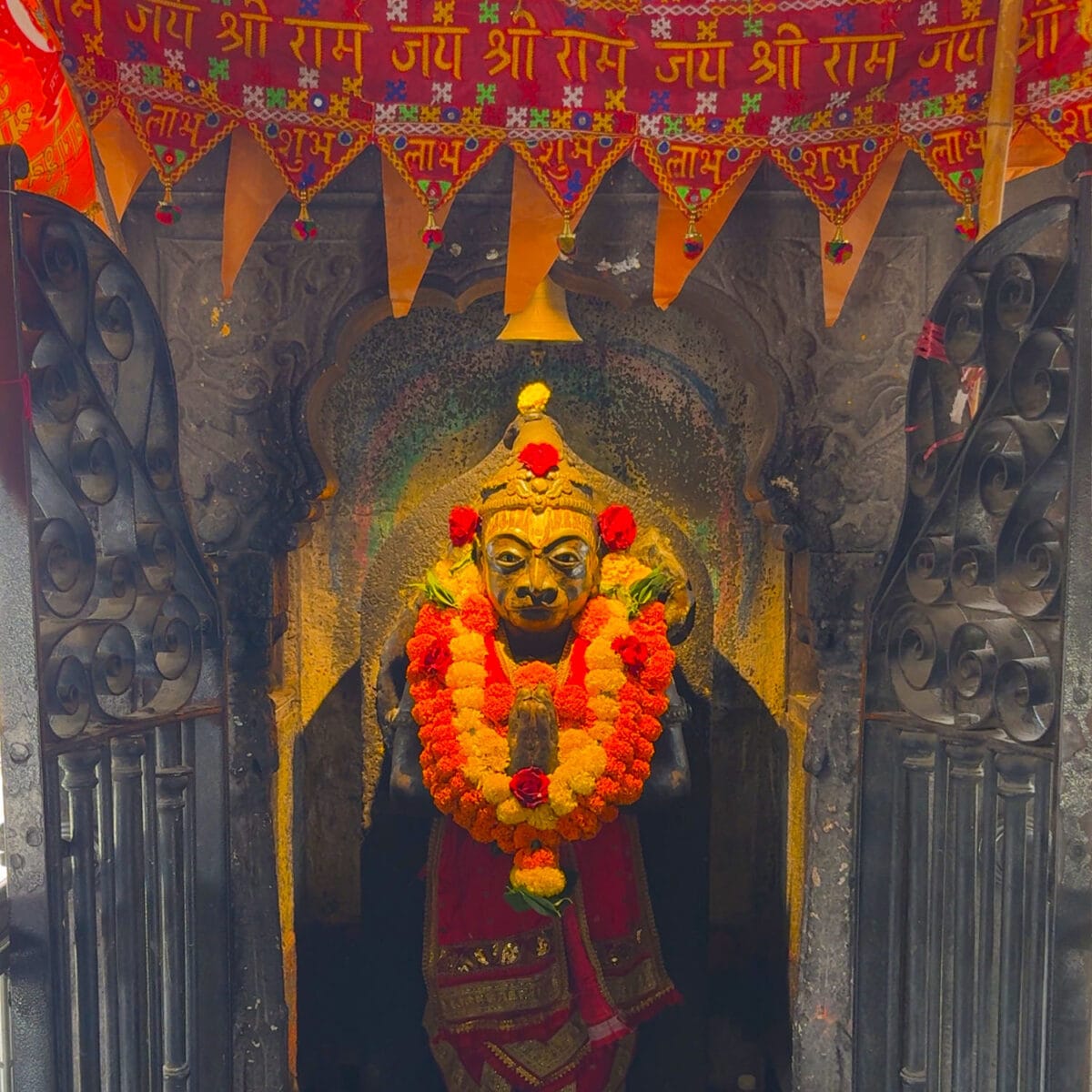
To reach the Garbha Griha (sanctum sanctorum), devotees must ascend 14 stone steps, representing the 14 years of exile endured by Mata Sita and Shriram – a reminder of the trials they faced before the eventual restoration of dharma through Ram Rajya.
Every element of the temple’s design is infused with meaning, making a visit to Kalaram Temple Nashik a deeply symbolic and reflective experience.
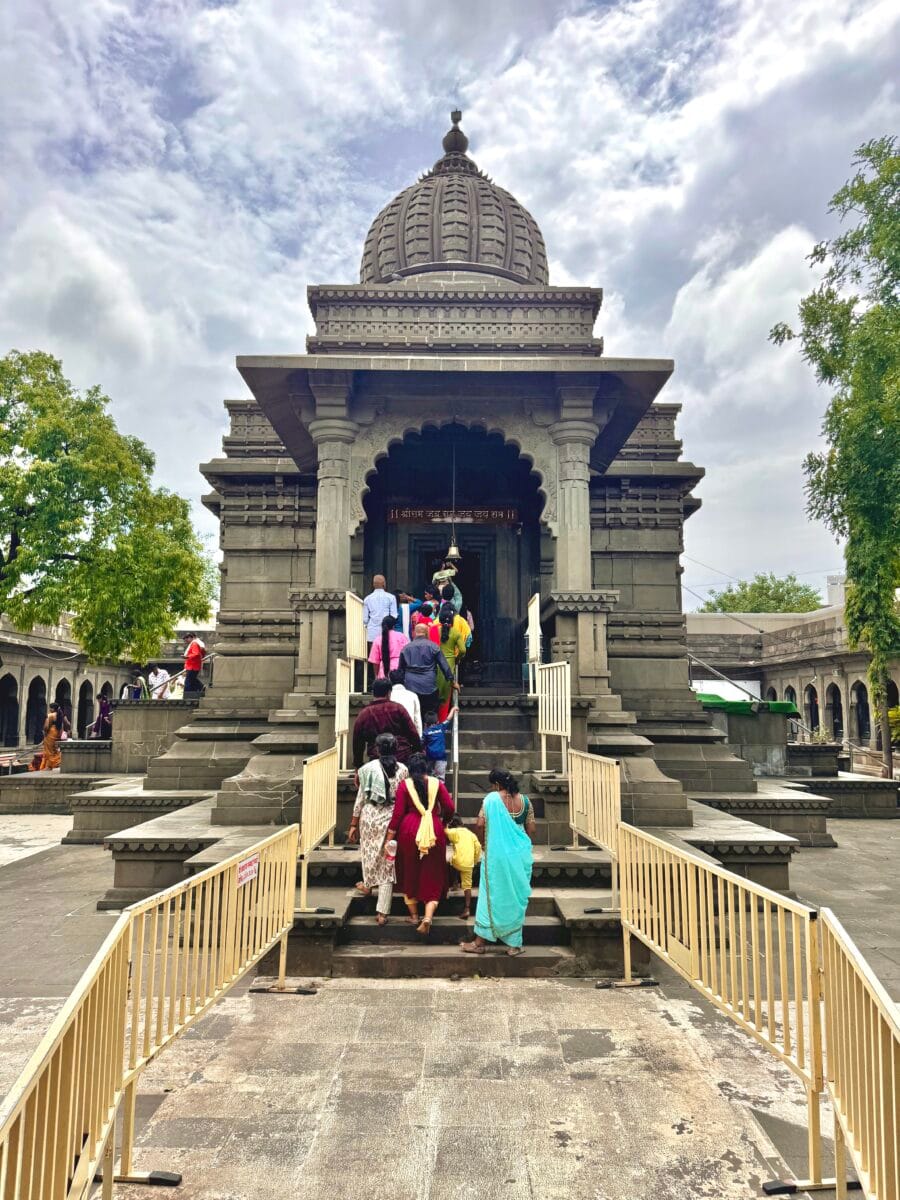
Vasantik Navratri Mahotsav – Spring Festival heralding the birth of Shriram
The Chaitra Vasantik Navratri Mahotsav held in March-April is one of the most spiritually vibrant times at Kalaram Mandir.
Festival Highlights:
- Daily Bhajans and Kirtans by renowned artists
- Indian classical music and dance performances in the evenings
- Saptami Mahaprasad: a grand food distribution attended by thousands
- Ram Janmotsav on Navami: chanting, and rituals celebrating the birth of Shriram
- Religious discourses on the Ramayana and Sanatan Dharma
Having personally attended the event for two consecutive years, I can say that the Vasantik Navratri Mahotsav is not just a celebration, it’s a culturally satisfying and reassuring experience.
Kalaram Temple Nashik Photos Gallery
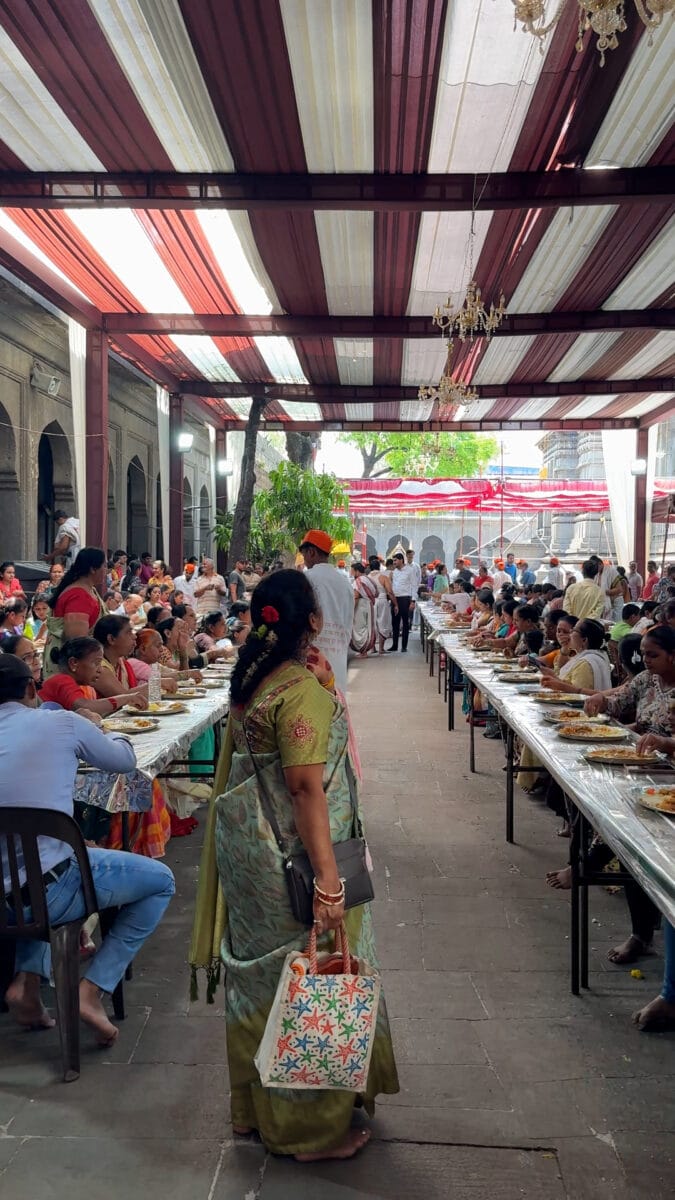
The Spiritual Symbolism of the Black Idol
The black idol of Lord Ram is extremely rare in Indian temples. Traditionally, Ram is depicted with a blue or fair complexion but here the deep black stone symbolizes:
- Detachment and discipline
- Inner strength and divine stillness
- Victory over ego, fear, and illusion
The idol’s dark hue, drawn from the Godavari’s depths, represents not just color, but spiritual gravity.
A Deeper Meaning Behind the Name “Kalaram”
While most believe that the name Kalaram Mandir refers merely to the black stone idol, a far deeper interpretation reveals Lord Ram’s cosmic role.
According to tradition and regional lore, during his exile at Chitrakoot, Shriram learned from sages and devotees about the anarchy, violence, and fear spreading across Central India – especially the Dandakaranya forest.
This region, now part of central India, was tormented by Bali, the vanar king who had abandoned the path of Dharma, and rakshasa forces aligned with Ravana.
Shriram decided to enter into this troubled territory and eventually reached Panchavati – the very site of the present Kalaram Temple Nashik.
Here, he manifested not just as a compassionate avatar, but as Kaal-Ram—the divine Kaal (time/death) destined to destroy adharma.
Kaal-Ram doesn’t just signify the black colour of the idol; it symbolizes the arrival of righteous force to end tyranny.
Thus, the name Kalaram is not simply descriptive of the colour of the idol – it is profoundly symbolic of Ram’s role as the Kaal (destroyer) of evil, the divine avatar who ends fear, restores balance, and upholds Sanatana Dharma.
Nearby Temples in Panchavati Pilgrimage Circuit
Pilgrims often combine their visit to Kalaram Temple with these spiritually significant sites:
- Sita Gufa – Where Sita stayed during the vanvas
- Ramkund – Where Ram performed Shraadha rituals for his father
- Kapaleshwar Mandir – A major Shiva temple in Nashik
- Tapovan – Believed to be the site of Shurpanakha’s encounter with Lakshman
All are located nearby, making Panchavati a complete Ramayana trail in Nashik.
Best Time to Visit Kalaram Mandir
- March–April (Chaitra Navratri): Peak celebrations and best ambiance
- Sept–Oct (Sharadiya Navratri): Celebrated with devotion
- Nov–Feb: Pleasant weather for relaxed darshan
- Early mornings or evening aartis are best for peaceful darshan
Tips for Visitors
- Dress Code: Modest, traditional wear is ideal
- Footwear: Leave outside the temple premises
- Parking: Available nearby, but crowded on festival days
- Queue System: Long queues during weekends and Navratri
- Phones/Cameras: Avoid photography inside the sanctum
- Accessibility: Elderly-friendly with support from temple staff
FAQs – Frequently Asked Questions about Kalaram Mandir
Q1: Why is it called Kalaram Mandir?
It refers to Shriram as “Kaal”, the destroyer of adharma, and also to the unique black idol housed in the temple.
Q2: What are the temple timings?
Daily 6:00 AM – 10:00 PM. Kakad Aarti and Maha Aarti are not to be missed.
Q3: How to reach the temple from Nashik Road Station?
Cabs, autos, or buses cover the 11 km journey. Search Kalaram Temple Nashik on Google Maps.
Q4: What is the distance between Ramkund and Kalaram Mandir?
Approximately 300 meters: a 5-minute walk through the sacred lanes of Panchavati.
Q5: Can we take photos inside the temple?
Photography is allowed in the courtyard, but not inside the sanctum where the black idol resides.
Q6: Are there hotels near the temple?
Yes, several options are available in Panchavati, old Nashik, and along the Godavari ghats.
Final Thoughts
The Kalaram Mandir of Nashik is not just a religious monument—it is a living embodiment of Sanatana Dharma and cultural legacy.
From its unique Kaal-Ram symbolism to its spiritual festivals and architectural brilliance, it continues to inspire devotion and dharmic living.
Whether you’re drawn by bhakti, heritage, or history, a visit to Kalaram Temple Nashik is a profound experience you’ll carry in your heart.
Jai Shri Ram !!!
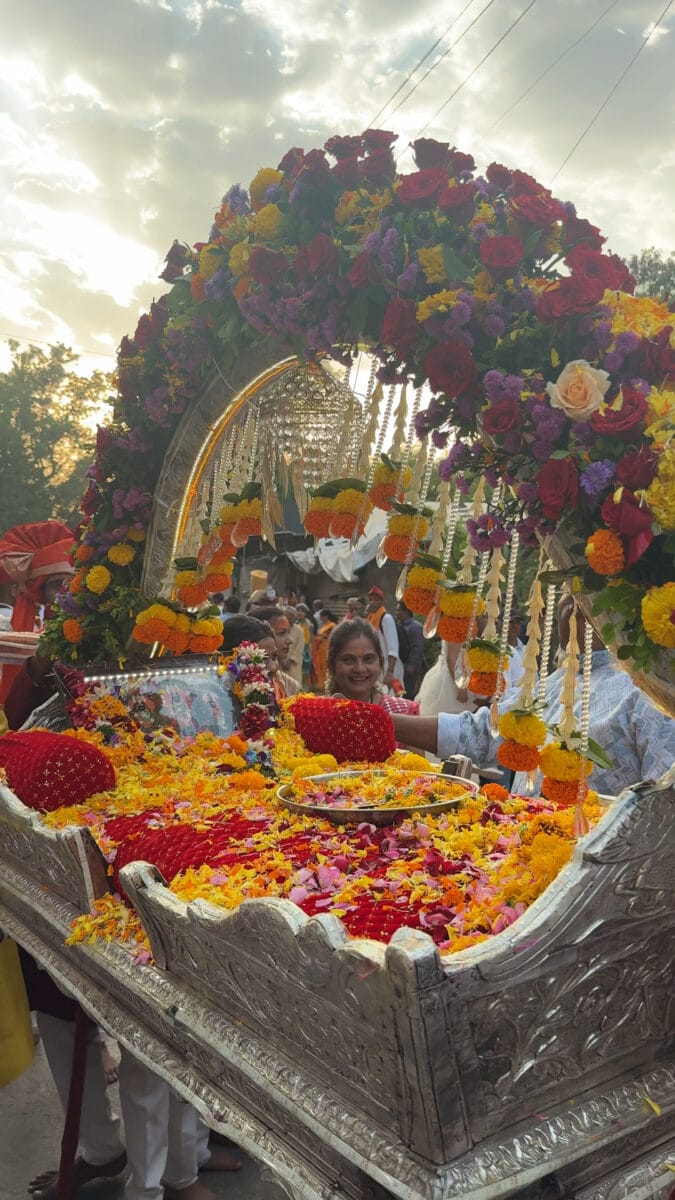
How was your experience at Shri Kalaram Mandir
You may help others by describing your experience and leaving a review below.
Customer Descriptions
Visited Shri Kalaram Temple in Panchavati Nashik….very pleasant and auspicious experience….very nice written article and information….Jai Mata Sita..Jai Shri Ram 🙏🙏🙏Jai Shri Ram 🙏🙏🙏
- Champa Shashti at Khandoba Mandir Panchavati Nashik: Yelkot Yelkot Jai Malhar! - 29 November 2025
- Mohanlal Ji Premium Veg Thali & Banquet Nashik Review 2025 - 22 November 2025
- Margashirsha Month 2025: Mahalakshmi Guruvar Vrat Katha Pooja Dates & Significance - 21 November 2025

